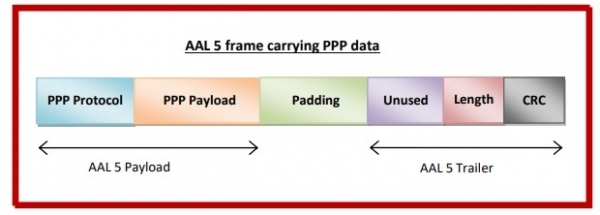
 Data Structure
Data Structure Networking
Networking RDBMS
RDBMS Operating System
Operating System Java
Java MS Excel
MS Excel iOS
iOS HTML
HTML CSS
CSS Android
Android Python
Python C Programming
C Programming C++
C++ C#
C# MongoDB
MongoDB MySQL
MySQL Javascript
Javascript PHP
PHP
- Selected Reading
- UPSC IAS Exams Notes
- Developer's Best Practices
- Questions and Answers
- Effective Resume Writing
- HR Interview Questions
- Computer Glossary
- Who is Who
PPP over ATM (PPPoA)
PPP over ATM (PPPoA) is a data link layer protocol to transmit PPP data over ATM networks, by encapsulating PPP frames in ATM Adaptation Layer 5 (AAL 5) frames.
Point − to − Point Protocol (PPP) is a data link layer protocol that is used to transmit data between two directly connected (point-to-point) computers. It is a byte – oriented protocol that is widely used in broadband communications having heavy loads and high speeds. It is also known as RFC 1661.
In Asynchronous Transfer Mode (ATM) networks, the ATM Adaptation Layer (AAL) provides facilities for non-ATM based networks to connect to ATM network and use its services. The most widely deployed AAL is AAL 5.
PPPoA is used to link domestic broadband modems to Internet Service Providers (ISPs) through telephone lines, mainly in DOCSIS and DSL carriers. It provides standard PPP features of authentication, encryption, and compression.
PPPoA Frame
The following diagram shows a PPPoA frame, i.e. a PPP frame encapsulated in an AAL 5 frame.

The AAL 5 payload encapsulates the PPP protocol and the PPP data. A padding is added and then the AAL 5 trailer is appended. The AAL 5 trailer may contain a number of fields, the common among which are the length of the payload and the error detection code, typically CRC (Cyclic Redundancy Check).

